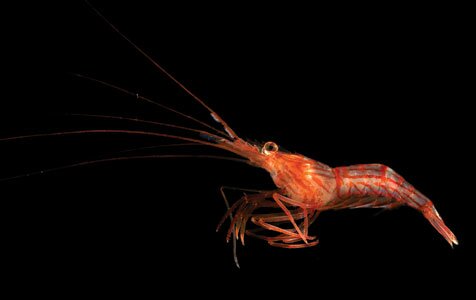Peppermint Shrimp
From Microcosm Aquarium Explorer

The Peppermint Shrimp, Lysmata wurdemanni. Matthew Wittenrich
Overview
This attractive shrimp can be introduced into an aquarium that is plagued by the pest anemone Aiptasia, which can overrun a system and kill may valuable corals. It is generally nocturnal.
Best kept in small groups of three–five. May occasionally clean fishes, but not as actively as the Pacific Scarlet Cleaner Shrimp, Lysmata amboinensis, and others.
Family: Hippolytidae
Other common name(s):
Native range:
Habitat: Provide caves or rocky hiding holes in the aquascape.
Maximum height: 4.5 cm (2 in)
Minimum aquarium size: 38 L (10 gal)
Water: Marine 24 °C (75 °F) - 28 °C (82 °F)
General swimming level: Bottom.
Feeding
Carnivore. Will scavenge uneaten fish foods. Can be fed meaty fare: adult brine shrimp, mysis shrimp, reef plankton.
Aquarium Compatibility
Lysmata wurdemanni is usually a good member of a reef community. If hungry, it may steal food items from corals and anemones, and cause their decline. May eat some polyps if not well fed (e.g., Yellow Polyps). Eaten by a number of fishes (including groupers, dottybacks, hawkfishes, wrasses).
Special Care
Slow acclimation (30-60 minutes of slowly adding tank water to the shipping bag water) is essential to ensure survival. Shrimps will keel over and die almost instantly from too sudden changes of water temperature, pH, and salinity.
Breeding/Propagation
This shrimp will spawn regularly in the aquarium, but larvae are usually eaten greedily by various fishes and invertebrates and do not often survive to mature.
Notes
Many look-alike species are known and may be sold as the Peppermint Shrimp. They may or may not prey on Aiptasia anemones. L. wurdemanni has pale body with numerous horizontal stripes running from head to tail. Legs are pale orange without striping. May change color significantly over a short time, depending on its physiological condition and stress state.








